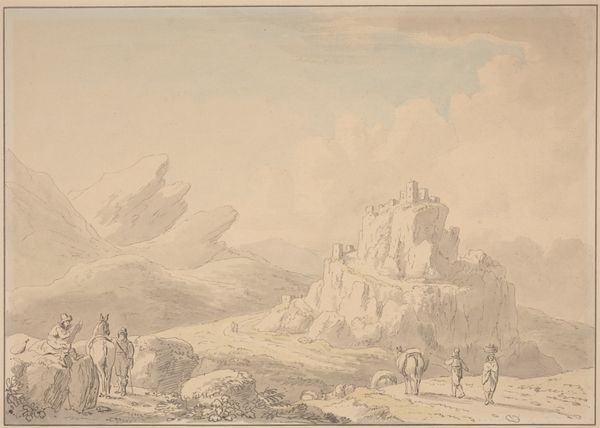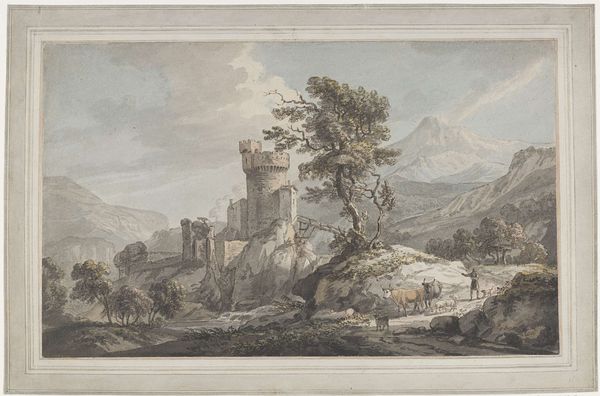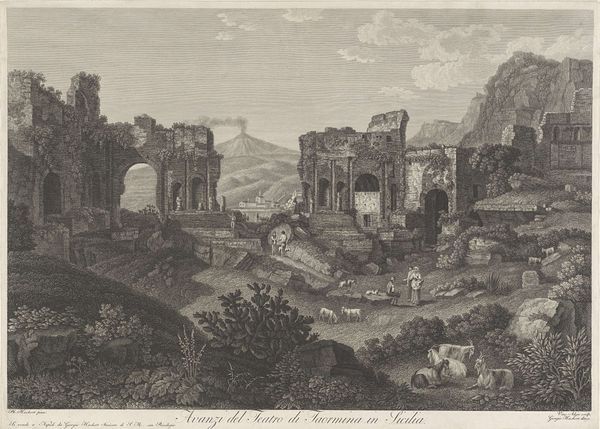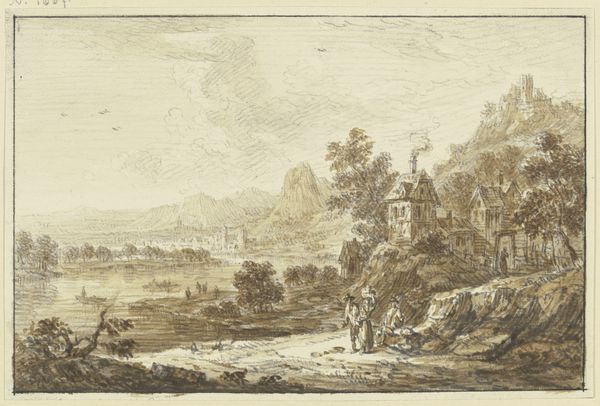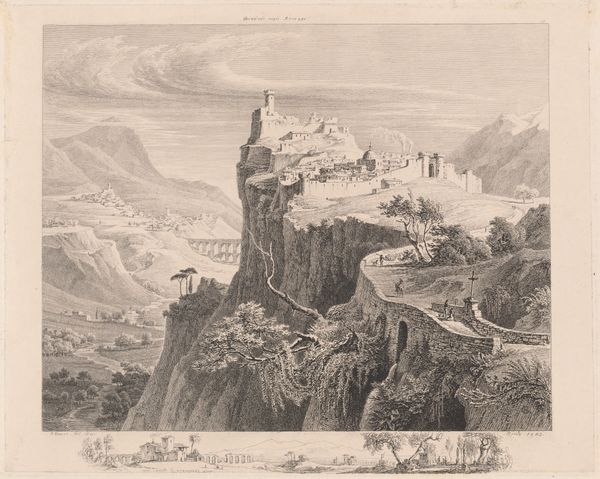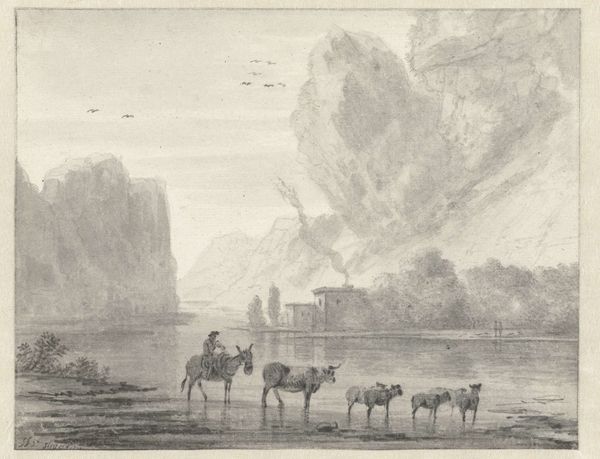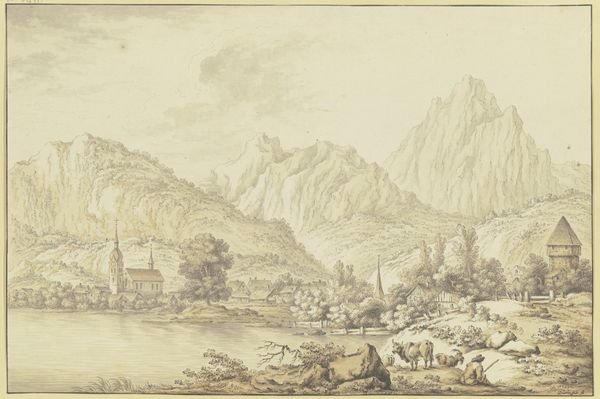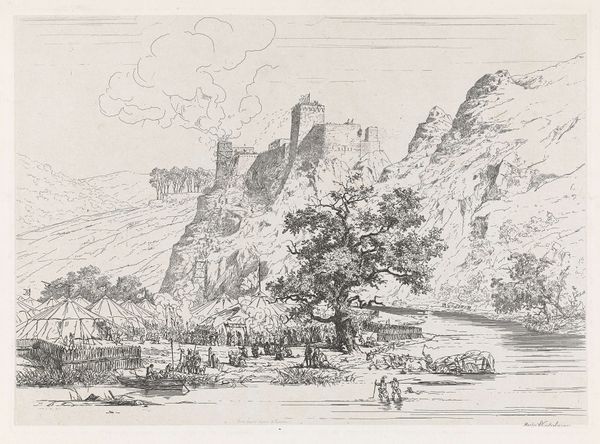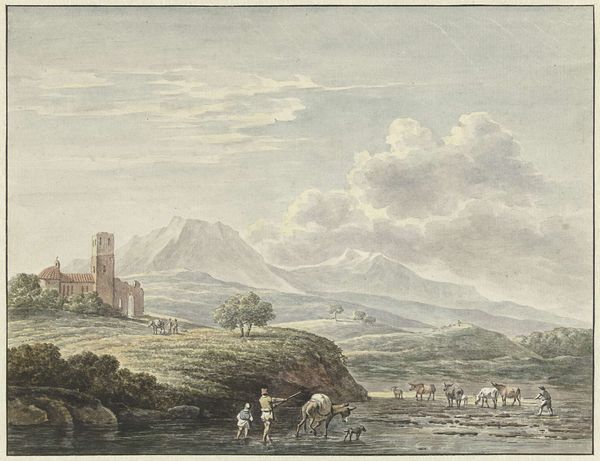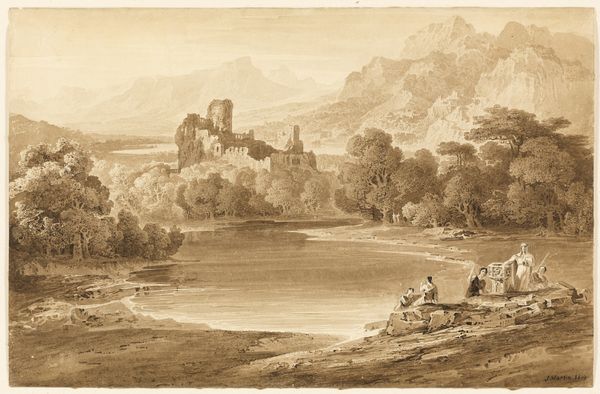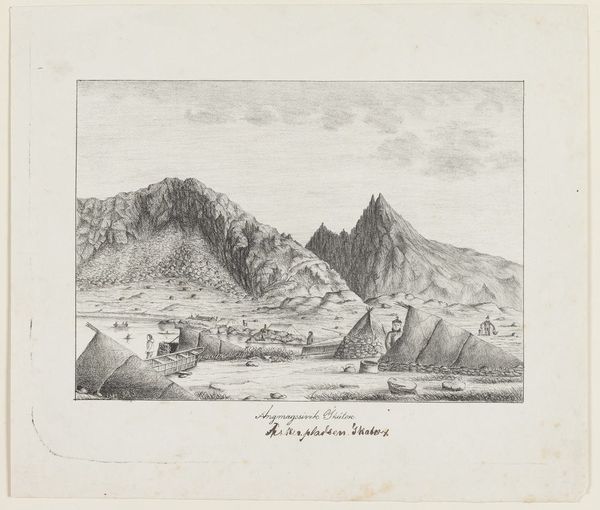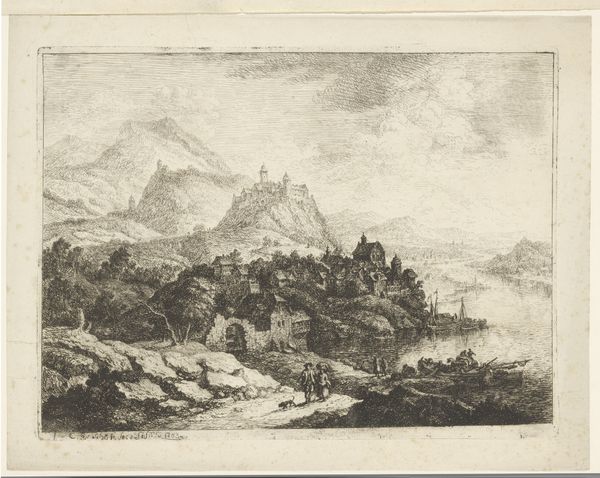
Auf einer Insel in einem Fluß eine Ruine, von hohen Bergen umgeben, vorne ein Hirte mit einigem Vieh
0:00
0:00
drawing, ink
#
landscape illustration sketch
#
drawing
#
ink painting
#
landscape
#
ink
#
15_18th-century
#
watercolor
Copyright: Public Domain
Editor: Here we have "Auf einer Insel in einem Fluss eine Ruine, von hohen Bergen umgeben, vorne ein Hirte mit einigem Vieh," an ink and watercolor drawing by Jean George Teissier. It feels incredibly delicate. How does the artist use composition to guide our eye through this scene? Curator: Notice the subtle yet effective use of chiaroscuro. The artist’s application of light and shadow sculpts the ruined castle and the surrounding landscape. Note how the delicate washes of ink and watercolor create a tonal balance, creating depth. What principles of pictorial construction seem evident? Editor: Well, the crumbling architecture on the island contrasts the softness of the surrounding nature. Curator: Precisely. And this relationship between the ruins and landscape is key. Consider the horizontal bands of the composition—the foreground, the water, the island, the mountains. How does this layering affect your perception of space? Do these sharp angular shapes disrupt your reading? Editor: I suppose the layers make it feel very vast. The mountains in the distance seem to echo the shapes of the ruins. How does the work succeed or fail at portraying grandeur? Curator: I think it's through these echoes, as you observe, that the drawing establishes an internal logic. Look closely at the way Teissier renders the texture of the stone and the foliage. It’s not just about imitation. Editor: Right, it is all very muted but refined, less about being faithful and more about artistic choice. This was informative, thanks! Curator: A fruitful exchange; I, too, benefitted from your insights.
Comments
No comments
Be the first to comment and join the conversation on the ultimate creative platform.
